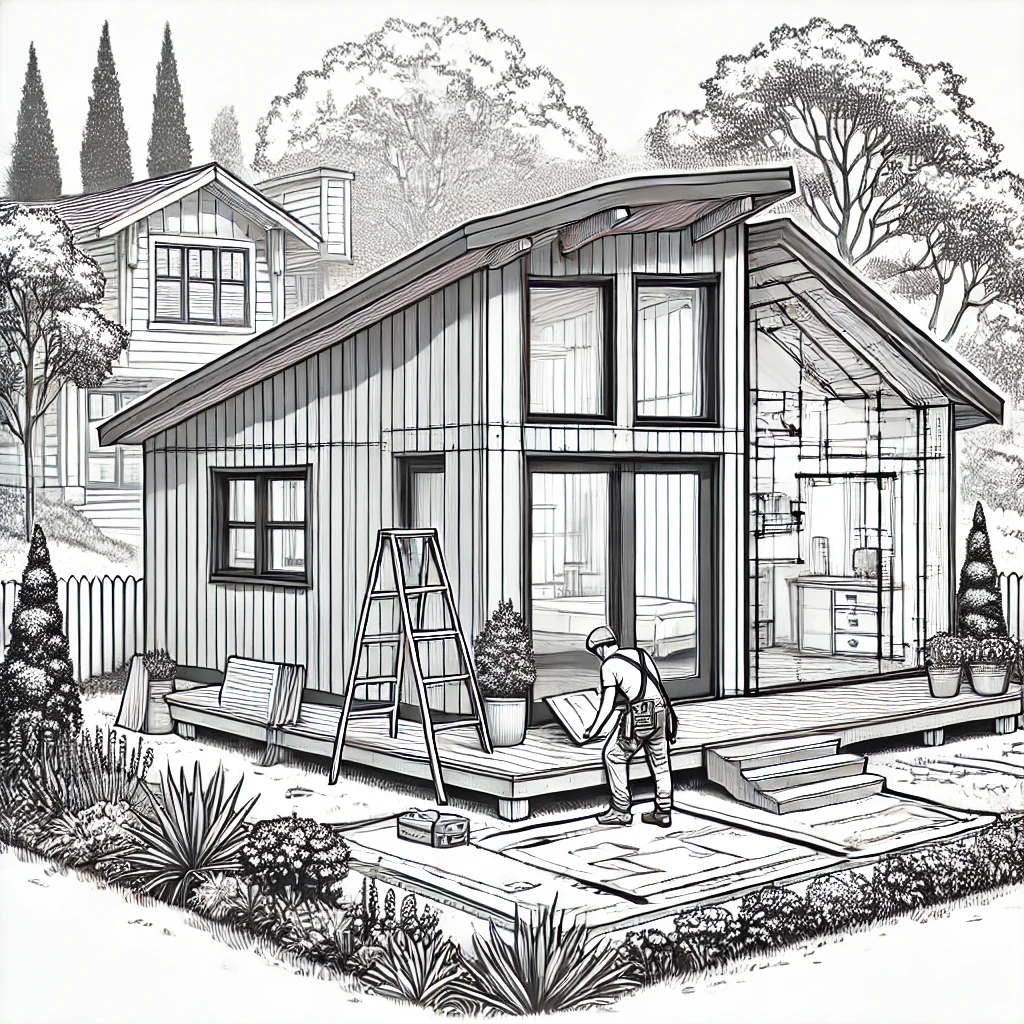Prefab ADUs have really boomed in popularity, along with ADUs in general.
These prefabricated ADUs offer a lot of benefits over a conventional ADU, as well as some potential drawbacks to be aware of.
In this guide, we’ll go through everything there is to know about prefab ADUs to clear it up.
What are Prefab ADUs?
A prefab ADU is a prefabricated accessory dwelling unit, constructed off-site and then transported to your property for installation.
Prefab ADUs come in various types, including modular and stick-built units, offering a range of options to suit different needs and preferences.
Types of Prefab ADUs
There are several types of prefab ADUs.
Modular ADUs
Modular ADUs are built in sections in a factory setting and then assembled on-site.
This method speeds up the construction process, often reducing build time by 30% to 50% compared to traditional methods.
Stick-Built ADUs
Stick-built ADUs are constructed on-site but come with pre-cut and pre-measured materials to speed up the build process.
They still offer a lot of customization, and are quite a unique type of prefab ADU.
Panelized ADUs
Panelized ADUs involve prefabricating wall panels in a factory, which are then transported and assembled on-site.
This method combines the speed of modular construction with the flexibility of stick-built methods, offering a balance of efficiency and customization.
Benefits of Prefab ADUs
Prefab ADUs offer a bunch of advantages, most notably the speed of construction thanks to the prefabrication.
Another benefit of the production process is consistent quality, with factory settings ensuring high standards of construction and reduced waste.
Design and Layout Considerations
Designing a prefab ADU is all about choosing the right style and layout that fits your life perfectly.
Think about how you can make the most of your space—open floor plans and versatile furniture can really help you get the most out of every square foot.
And don’t forget about outdoor spaces!
A cozy patio or deck can give you even more room to relax and enjoy, making your ADU feel even more spacious and functional.
Cost Considerations
While prefab ADUs are generally more affordable than traditional builds, they can quickly stack up sneaky expenses, which can get out of hand if not managed correctly.
These include things like the base price of the ADU, transportation and installation costs, and site preparation expenses such as foundation work and utility hookups.
Despite these costs, the overall investment in a prefab ADU can be more economical and time-efficient compared to traditional construction methods.
Regulations and Permits
Building a prefab ADU means you’ll need to navigate local building codes and zoning laws, but don’t worry—it’s all part of the process. You’ll want to make sure you get the right permits and that your property meets the local zoning requirements.
Staying on top of these regulations is key to keeping things moving smoothly and avoiding any legal headaches. Working with a professional who knows the local rules can make everything easier and help you steer clear of any surprises along the way.
Are Prefab ADUs Difficult to Build?
Prefab ADUs are generally easier to build than traditional ADUs.
The prefabrication process in a controlled factory environment reduces the complexity and risks associated with on-site construction, but that doesn’t mean it’s bulletproof.
Prefab construction can result in fewer delays and more predictable outcomes. However, challenges such as site preparation and utility hookups still need to be managed carefully.
Pros and Cons of Prefab ADUs
Prefab ADUs have a lot of advantages, but they also come with their own set of unique challenges as well.
Pros
The major pros of prefab ADUs are the speed of construction and the potential cost savings:
- Speed of Construction: Faster build times due to factory prefabrication.
- Cost Savings: Lower labor and material costs.
- Quality Control: Consistent construction quality.
- Sustainability: Reduced waste and energy efficiency.
It’s also easier to keep control of your budget as well, as there is less room for things to go wrong.
Cons
In terms of drawbacks, prefab ADUs can be more difficult to customize (at least compared to a fully custom ADU project) and have transportation costs that need to be considered:
- Limited Customization: Less flexibility compared to fully custom builds.
- Transportation Costs: Added expenses for transporting units to the site.
- Zoning Restrictions: Potential local zoning and permit challenges.
The pros definitely outweigh the cons, however.
So That’s It
Prefab ADUs offer fast construction and can be more cost-effective (at least in terms of construction) than your typical ADU.
They’re also very customizable and are worth considering, at the very least, for any ADU build project.
